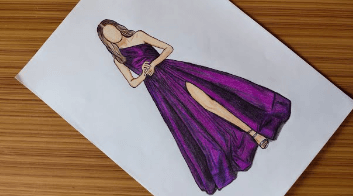Art:2tbam8qvbhg= Silk Drawing

Art:2tbam8qvbhg= Silk Drawing, an art form steeped in history, invites a closer examination of its intricate techniques and the cultural narratives woven into its fabric. The interplay between traditional craftsmanship and contemporary innovation reveals not only the aesthetic qualities of silk but also the deeper emotional connections it fosters among artists and viewers alike. As we explore the unique properties of this luxurious medium, one must consider how these elements contribute to the broader discourse of artistry and heritage. What implications does this have for the future of silk drawing in a rapidly evolving artistic landscape?
History of Art:2tbam8qvbhg= Silk Drawing
The history of Art:2tbam8qvbhg= Silk Drawing is a rich tapestry woven into the broader narrative of textile arts, tracing its origins back to ancient civilizations where the allure of silk captivated artisans and consumers alike.
Read More Art:1prrsqt3ykc= Creative:Bw8dqizhyro= Drawing
This medium not only showcased exquisite craftsmanship but also held profound cultural significance, reflecting social hierarchies and trade networks that transcended borders, thereby enriching the global narrative of artistry.
Techniques and Materials
Silk drawing techniques encompass a variety of methods that highlight the unique properties of this luxurious fabric, allowing artists to express their creativity while adhering to time-honored traditions.
Critical to this process are meticulous fabric preparation and expert color mixing, which enable seamless blending and vibrant designs.
Each technique, whether resist or dye application, contributes to the intricate narrative woven into silk artworks.
Unique Qualities of Silk
One of the most remarkable attributes of silk is its inherent luster, which captivates the eye and elevates the aesthetic appeal of any artwork.
Additionally, silk properties such as strength and durability contribute to its longevity, making it a versatile medium.

Inspiration and Creative Ideas
Exploring the artistic potential of silk reveals a plethora of inspiration and creative ideas that can transform traditional techniques into unique expressions.
Artists can harness silk’s fluidity to convey emotional expression, bridging personal feelings with broader narratives.
Additionally, integrating cultural significance into silk drawing not only enriches the artwork but also fosters a deeper connection with diverse heritages, encouraging a dialogue between tradition and innovation.
Conclusion
Art:2tbam8qvbhg= Silk Drawing, with its rich history and intricate techniques, serves as a profound medium for artistic expression. The ability to create vibrant designs on silk is highlighted by the fact that silk can absorb dye up to 20 times more effectively than cotton, resulting in unparalleled color saturation. This statistic underscores the material’s unique qualities, reinforcing its role in cultural dialogue and artistic innovation. Ultimately, silk drawing remains a significant contributor to the global tapestry of artistic heritage.





